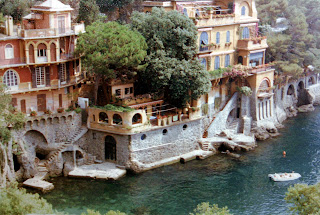The joys of field research
I had returned from a year off study in which I’d bummed around Zimbabwe and Europe spending what little money I had and some of what I didn’t have. I’d largely recovered from major surgery and had as close a handle on my diabetic blood sugar control as was possible in the early 1980s. The treatment was one daily injection, and no blood test kits. This needed to be fortified by a stable lifestyle free of changes in mood, mental exertion and physical activity. I also lived several hundred kilometres from my diabetic specialist.
But I was young and healthy and had started doing field research involving unpredictable levels of both physical and mental exertion. And a fair share of interesting events was usual when living alone in a game reserve; enough to cause blood sugars to behave randomly.
One such event happened when I was walking in a forest on a narrow path flanked by tall bracken. I was probably tired and inattentive but a slight movement caught my eye. A black mamba reared up directly in front of me. Within striking distance. (Generally, I regard black mambas as within striking distance if they are closer than about 10 meters). But this one was, without question, definitely within real striking distance. I'd nearly trodden on it.
I am unashamed to admit that I am terrified of black mambas. Highly venomous and aggressive they grow up to 2.5 metres. Surviving a bite is unlikely. More to the point, my perception of these killers, ready to sink their fangs into any human was instilled by experts. Herpetologist experts told me this when I needed to weigh live snakes and went to the local snake park for help.
Behind the scenes in any snake park are many snakes that are not on display to the public. It was these animals that were weighed. A number of herpetologists crowded the lab going about their snakey work. My herpetologist selected a reptile, using tongs or by hand (dependent on the aggressiveness and toxicity), and carried it to the scale in a bag where I recorded its weight. The snake was returned to its cage. We worked for a few hours.
The last species to weigh were black mambas. Suddenly the procedure changed. "Ok, listen up everyone!" exclaimed my herpetologist loudly. "We are going to be carrying mambas to the scale. Stop what you are doing and step back. We don't want any mishaps!" We'd carried maybe 30 or 40 snakes that morning including puff adders and cobras but none had evoked a warning. My irrational fear of these animals was now officially rational - backed up by expert opinion.
Somehow I'd ended up doing research in a reserve full of black mambas. When I first arrived in the reserve, the ranger told me what to do if I got bitten. Do not exert yourself. Lie down in the shade. Get comfy. Loosen all tight clothing. Look up at the sky. And enjoy your last few moments! I lived in terror.
The mamba swayed slightly from side to side. Its head about waist high. Clearly annoyed at my intrusion. I recalled the snake park warning. Somehow my brain went into survival mode. I was unlikely to move quicker than the mamba could strike. So flight was out of the question and I had no intention of fighting this thing! I stayed still. Deathly still.
It seemed were we there for hours. Eyeball to eyeball. Its tongue flicked (the damn thing is tasting me I thought!). My legs trembled. After an age, the snake moved slightly. It lowered its head a tad. Its head was now closer to me, to my bare, trembling thighs. Still I stood. Very gradually, it lowered the top of its body to the ground and disappeared into the bracken. I was left with one thought in my head; Where the hell is it? Then I turned and ran.
But this experience was not over yet. I'd been checking some traps and just beyond where I'd seen the snake were traps that I could not leave unchecked. I'd have to retrace my steps past where I'd seen the snake. Nervously, I dragged myself back along that terrifying path. Visibility was restricted to the narrow, dusty path, the bracken preventing me from seeing anything on either side. I imagined reptilian eyes on my legs. Where is it?
The fact I'm writing this means that I didn't encounter that snake again that day. And fortunately the traps were empty. I hurried back to camp and made a pot of tea, spilling much of it as I slowly counted my blessings. I have no idea how my blood sugar reacted. Terror took priority that day!
Ant's snakey motto: It's better to see a snake before it sees you.
















